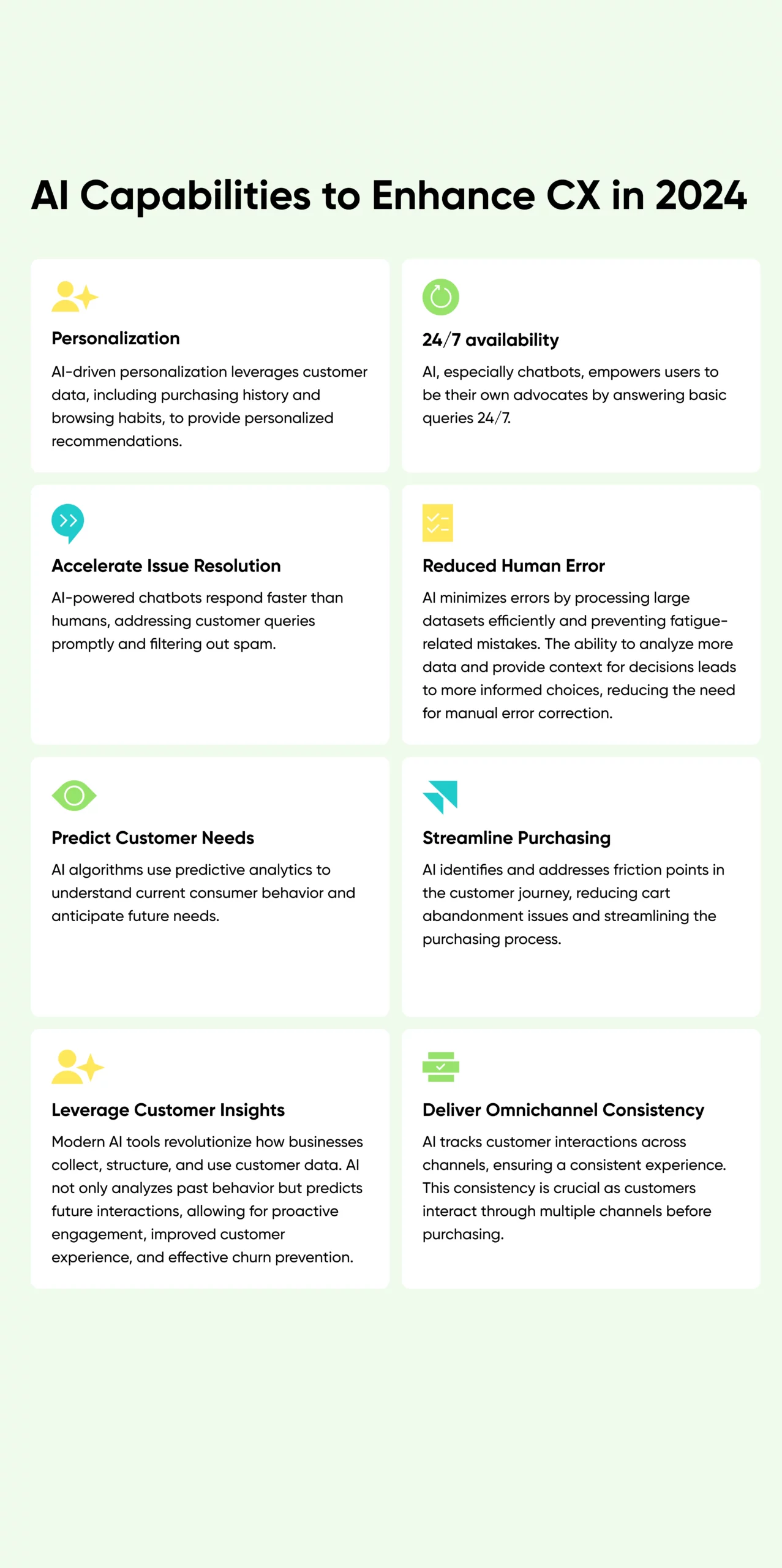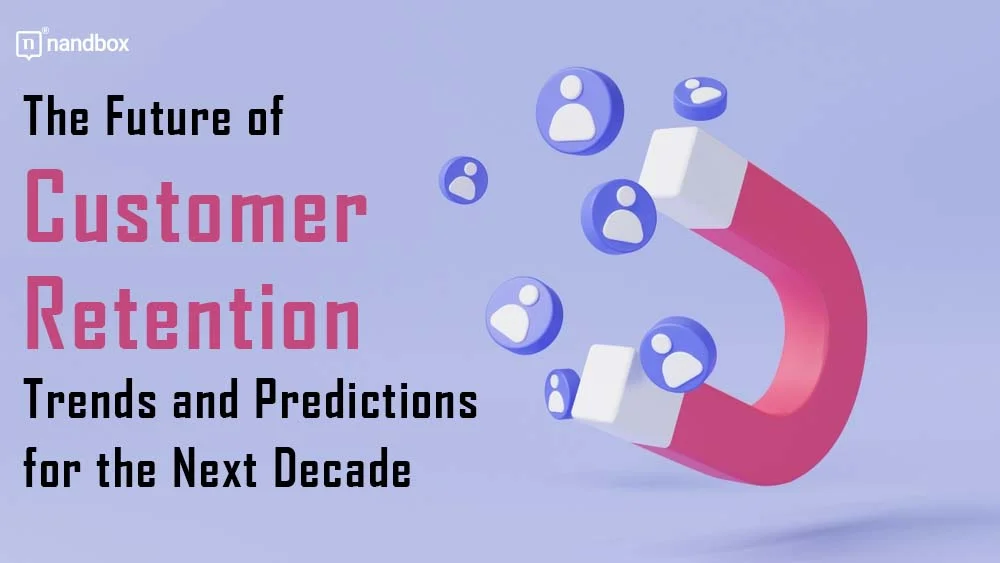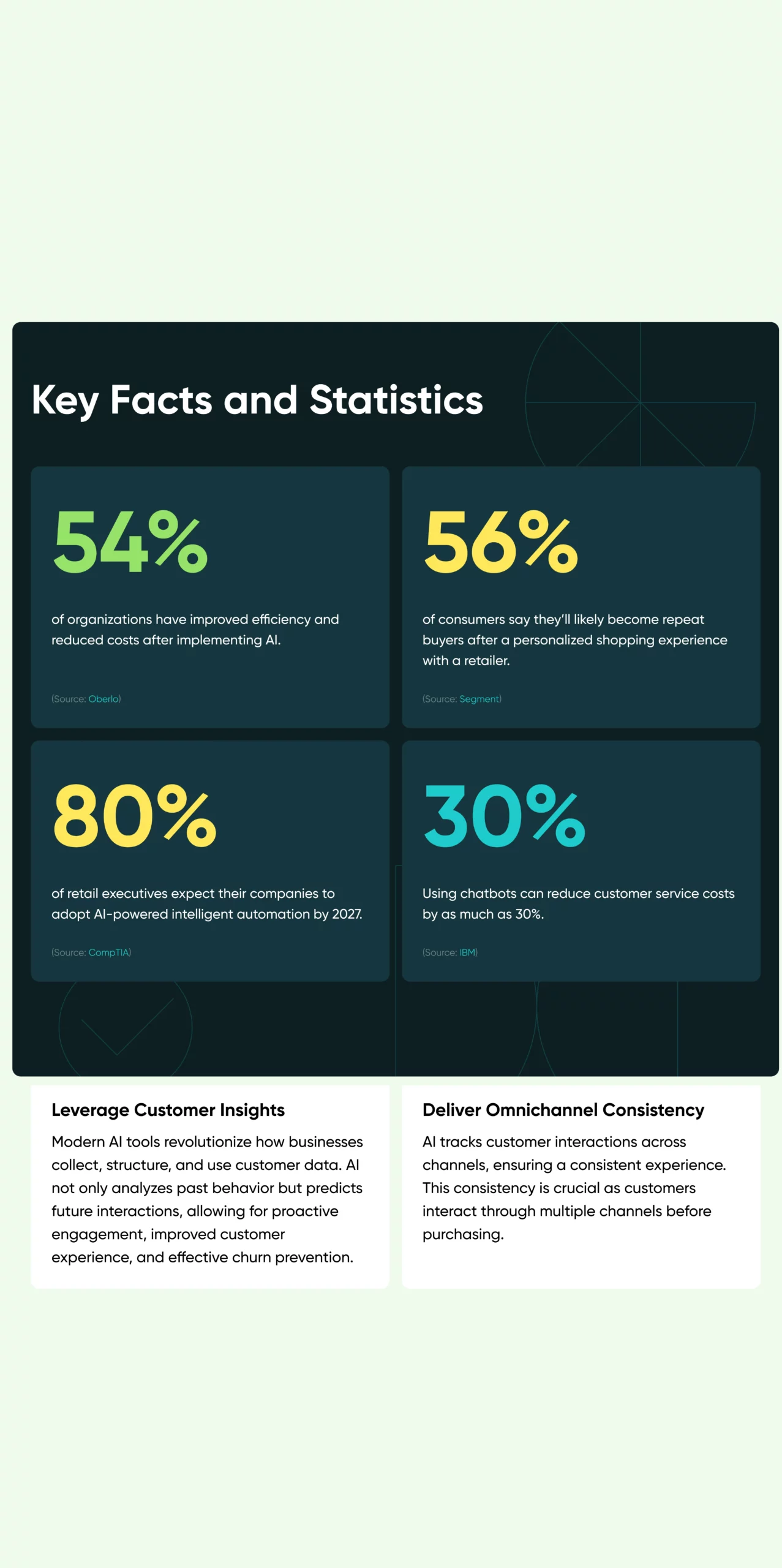The Future of Customer Retention: Trends and Predictions for the Next Decade
With increasing competition and the high value placed on customer loyalty, companies are increasingly adopting customer retention and loyalty strategies to keep customers engaged and satisfied. Changing customer expectations — not to mention the growing benefits of technological innovation — mean that companies are forced to pay more attention to customer retention. As we enter a new decade, companies must understand and adapt to the new trends that will shape the future of customer retention. This article explores these trends and offers predictions for the next decade, arming businesses with the market intelligence they need to succeed in a world that is always on the move.
The Rise of Personalization
The quest for personalized customer experiences is not new, but its importance is set to reach unprecedented levels in the coming years. Customers no longer view personalized interactions as a luxury but as a basic expectation. The driving force behind this shift is the wealth of data at businesses’ disposal, allowing for a deep understanding of customer preferences, behaviors, and needs. Artificial Intelligence (AI) and Machine Learning (ML) are at the forefront of this revolution, enabling companies to analyze vast datasets and deliver personalized content, recommendations, and services at scale.
The future promises even more sophisticated personalization strategies. AI algorithms will become more adept at predicting customer needs, sometimes even before the customers themselves are aware of them. This predictive capability will enable businesses to offer hyper-personalized experiences, making each customer feel uniquely valued and understood. However, with great power comes great responsibility. Companies must navigate the fine line between personalization and privacy invasion, ensuring that customer data is used ethically and transparently.
Pro Tip: Start by auditing your current customer retention and loyalty strategies to identify areas where integrating new technologies and personalization can make the most impact. Leverage AI tools to segment your customer data effectively, allowing for more targeted and personalized marketing campaigns.
Integration of Technology in Customer Experience (CX)
The integration of technology into customer experience has transformed the way businesses interact with their customers. Chatbots, augmented reality (AR), virtual reality (VR), and the Internet of Things (IoT) have all played a part in making customer interactions more engaging and efficient. Chatbots are now capable of handling complex customer service inquiries, AR and VR offer immersive experiences that enhance product visualization, and IoT devices provide seamless service and support.
The role of Artificial Intelligence (AI) in elevating customer experience cannot be overstated. AI’s ability to analyze customer data and predict behaviors has opened up new avenues for personalized communication and service automation. Predictive analytics, powered by AI, can forecast customer needs and tailor services accordingly, while natural language processing (NLP) improves chatbots’ effectiveness in handling inquiries.
Looking ahead, we anticipate even more innovative uses of AI in CX, including the integration of AI with AR and VR to create deeply immersive and personalized experiences.


This forward-looking data paints a clear picture: AI is not just a fleeting trend but a cornerstone of future CX strategies. As we harness AI’s full potential, the customer experience is poised for unprecedented levels of efficiency, personalization, and satisfaction, setting a new standard in customer service for 2024 and
beyond. Embracing these innovations responsibly will ensure that as we improve our services, we also fortify the trust customers place in our digital capabilities.
Pro Tip: To stay at the forefront of CX innovation, businesses should consider adopting AI technologies that not only enhance operational efficiency but also offer real-time, personalized customer interactions. Start by evaluating your CX strategy against the emerging AI trends and capabilities, ensuring that your approach aligns with the expectation for increased personalization, all while maintaining rigorous data privacy standards.
The Importance of Customer Feedback Loops
In the area of customer retention, the importance of feedback cannot be overestimated. The ability to gather, analyze, and act on customer feedback in real time is becoming a cornerstone of effective retention strategies. This continuous loop allows businesses to make swift adjustments to their offerings, ensuring they meet or exceed customer expectations. In the future, we anticipate the development of more sophisticated tools and platforms for collecting feedback across various touchpoints, including social media, customer service interactions, and post-purchase evaluations.
The evolution of feedback mechanisms will see the integration of AI marketing tools to analyze open-ended customer feedback at scale, identifying patterns and sentiments that can inform product development, customer service improvements, and personalized AI tools for marketing strategies. This real-time insight into customer satisfaction will empower businesses to proactively address concerns, mitigate dissatisfaction, and foster a strong sense of loyalty among their customer base.
Practical Tip: Implement a feedback management system that integrates across all customer touchpoints, enabling real-time responses and adjustments based on customer input.
Sustainability and Ethical Business Practices
The next decade will also witness a significant shift towards sustainability and ethical business practices, playing a pivotal role in customer retention. As consumers become more environmentally conscious and socially aware, their purchasing decisions are increasingly influenced by the ethical stance and sustainability efforts of brands. Businesses that prioritize environmental protection, social responsibility, and ethical dealings will find a competitive edge in retaining customers who value these principles.
We predict that transparency in business practices, product sourcing, and sustainability efforts will become non-negotiable for a growing segment of the consumer population. Companies will need to integrate these values not just in their marketing narratives but in their core operations and product offerings. Loyalty programs and customer engagement strategies that emphasize and reward sustainable consumer behavior will also gain traction, further embedding these values into the customer retention equation.
Actionable Advice: Clearly communicate your company’s sustainability efforts and ethical practices through your marketing channels, creating a strong brand image that resonates with value-driven consumers.
The Evolution of Loyalty Programs
Loyalty programs have long been a staple in customer retention and loyalty strategies, but their future lies in personalization and innovation. The traditional points-for-purchases model is evolving into more nuanced and engaging formats that offer genuine value to the customer. We foresee the rise of tiered rewards systems that recognize and reward customer engagement and loyalty in varied forms, including social media advocacy, feedback contributions, and sustainable shopping practices.
Gamification elements will become increasingly common, turning loyalty into an engaging, interactive experience. Personalized rewards, based on customer preferences and purchase history, will further enhance the appeal of loyalty programs. Additionally, we anticipate greater use of technology to streamline the loyalty experience, with mobile apps and digital wallets facilitating easy access to loyalty rewards and benefits.
In the era of data privacy concerns, businesses will need to ensure that their loyalty programs respect customer data and prioritize transparency and consent. The successful loyalty programs of the future will be those that not only offer value but also align with the customer’s values and expectations of privacy and ethical treatment.
Implementation Insight: Design your loyalty program to include tiers that reward not just purchases but also engagement, such as social media interaction and eco-friendly actions, to foster a deeper connection with your brand.
Leveraging Social Media and Community Building
The role of social media in customer retention is set to become more strategic and integrated into broader marketing and customer service strategies. Social platforms offer a unique opportunity for brands to build communities around their products and values, fostering a sense of belonging and loyalty among customers. In the future, we anticipate businesses will leverage these platforms not just for marketing but for creating immersive brand experiences, facilitating customer-to-customer interactions, and gathering valuable feedback.
Building a brand community on social media can transform customers into brand advocates, who not only remain loyal but actively promote the brand through word-of-mouth. Innovative uses of social media, such as live events, exclusive groups for loyal customers, and interactive content, will enhance engagement and strengthen customer relationships. As social media platforms evolve, so too will the strategies for using them to retain customers, with a focus on authenticity, transparency, and value-driven content.
Pro Tip: Use social media to create exclusive content for your most loyal customers, including behind-the-scenes looks, early product releases, and members-only discussions, to strengthen the community feel.
Customer Retention Analytics: From Data to Action
The backbone of future customer retention and loyalty strategies will be advanced analytics. The ability to collect, analyze, and act on customer data will distinguish leaders in customer retention from their competitors. Businesses will increasingly rely on sophisticated data analytics tools to understand customer behaviors, predict churn, and identify opportunities for engagement. The future will see a rise in predictive analytics, using AI and machine learning to forecast individual customer behaviors and tailor customer retention and loyalty strategies accordingly.
Furthermore, the integration of analytics across all customer touchpoints will provide a holistic view of the customer journey, enabling businesses to deliver timely and relevant experiences that boost retention. Real-time analytics will allow companies to act swiftly, adjusting customer retention and loyalty strategies in response to immediate feedback and market trends. As the capabilities of analytics tools grow, so too will the emphasis on data security and privacy, ensuring that businesses use customer data responsibly and with consent.
Action Step: Invest in analytics software that offers predictive capabilities, allowing you to anticipate customer needs and address potential churn risks proactively.
Conclusion
As we look to the future of customer retention, embracing these trends and integrating the provided practical tips into your customer retention and loyalty strategies will be crucial. The dynamic nature of customer expectations and technological advancements requires businesses to be adaptable, innovative, and customer-focused. By taking proactive steps now, you can ensure your company remains competitive and continues to grow its loyal customer base in the decade to come.
The next decade promises significant opportunities for businesses willing to invest in understanding their customers and leveraging the latest technologies and insights to meet their evolving needs. As we move forward, the ability to anticipate and adapt to these changes will be the hallmark of successful customer retention in an increasingly competitive landscape.
The future of customer retention is both exciting and challenging. Now is the time for businesses to start integrating these trends into their customer retention and loyalty strategies, staying ahead of the curve, and setting the standard for customer loyalty. Stay informed, be adaptable, and most importantly, listen to your customers — they are your most valuable asset in the quest for long-term success and sustainability.
Author Bio:
Oleh Maksymovych
Co-founder, General Manager at Cloudfresh




